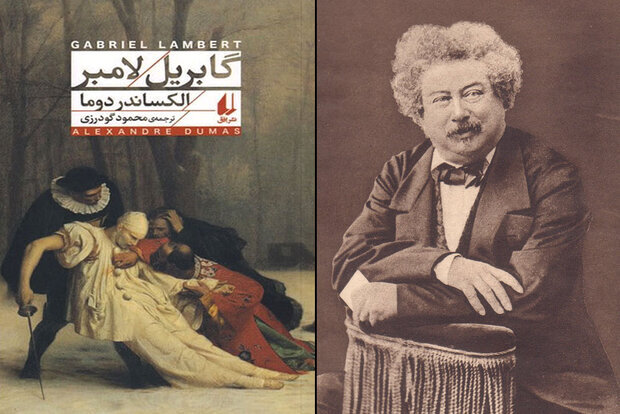Alexandre Dumas’ “Gabriel Lambert” published in Persian

TEHRAN – French writer Alexandre Dumas’ “Gabriel Lambert” has been published in Persian.
Ofoq is the publisher of the novel translated by Mahmud Gudarzi.
The novel opens with Dumas writing the play “Paul Jones” in Toulon in 1835. He encounters a squad of convicts, condemned “to the galleys for life.” Much to his surprise, one of the convicts looks familiar.
The convict identifies himself as the “Viscount Henri de Faverne”. The name permits Dumas to recall the circumstances of their meeting. Four years previously, the Dumas had stood as second in a duel between the Viscount and a friend of Dumas, which ended with the Viscount being run through with a sword. The Viscount had appeared frightened, fought badly, and did not behave, in Dumas’ opinion, as an aristocrat should.
On returning to Paris, Dumas looks up Dr. Fabien, who cared for the wounded Viscount. Fabien hands Dumas a sheaf of medical memoirs, a device which allows Dr. Fabien to take up the narrative. The wounded Viscount, it transpired, was very rich, and attempting to marry into an aristocratic family.
However, upon investigation, his purported background turns out to be fictitious. The Viscount recovers, but subsequently calls upon Dr. Fabien to help in his moral distress. His former mistress Marie and illegitimate child have turned up in Paris looking for him. Can Dr. Fabien persuade the woman to go home?
Dr. Fabien interviews Marie, a device which allows Marie to take up the narrative. The Viscount’s real name is Gabriel Lambert, and he was a peasant in Normandy, filled with grandiose ambitions, with but a single talent: copying illustrations, artworks and handwriting. Gabriel promises to marry Marie, impregnates her, and then goes to Paris and disappears.
Dr. Fabien is attempting to persuade Gabriel to give up marrying the aristocrat’s daughter, when a historical character shows up: Eugene-François Vidocq (1775-1857), head of the Paris Surete.
Vidocq arrests Gabriel for forgery. Gabriel, it appears, has made his fortune by forging banknotes. Gabriel is sentenced to death, but his terror of death is so moving that Dr. Fabien uses his influence to persuade the King to commute his death sentence to life imprisonment in the galleys. Gabriel is grateful, but Gabriel’s father renounces Gabriel as a coward.
The end of the novel is drawn in the form of a letter to Dumas from “Picklock”, the thief Gabriel is chained in the galleys. Gabriel is depressed and wants to commit suicide. After a considerable amount of comedy, Gabriel hangs himself.
Photo: A combination photo shows Alexandre Dumas and the front cover of the Persian edition of his novel “Gabriel Lambert”.
MMS/YAW
